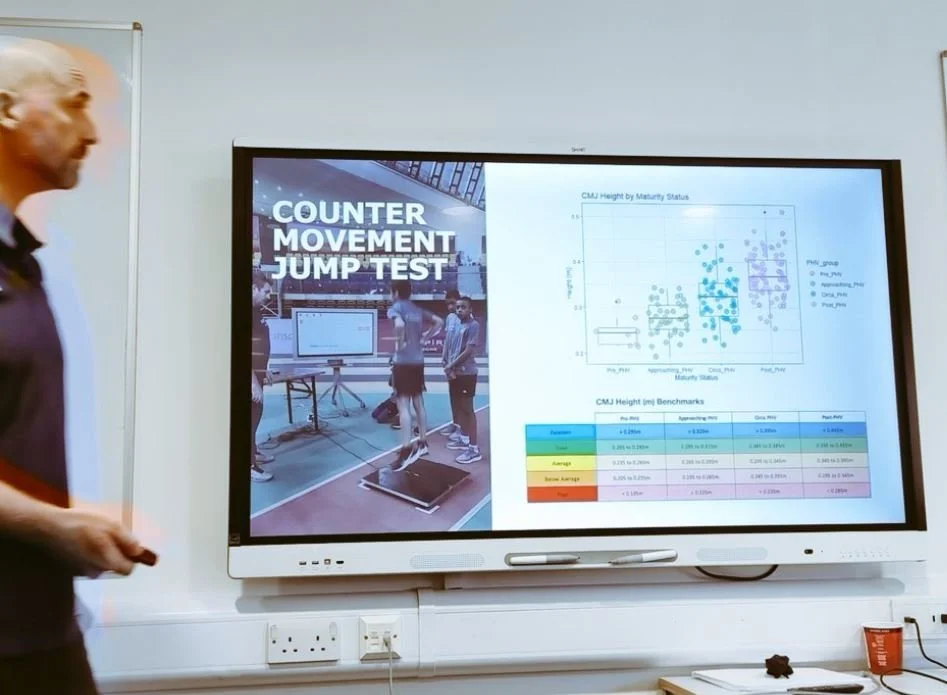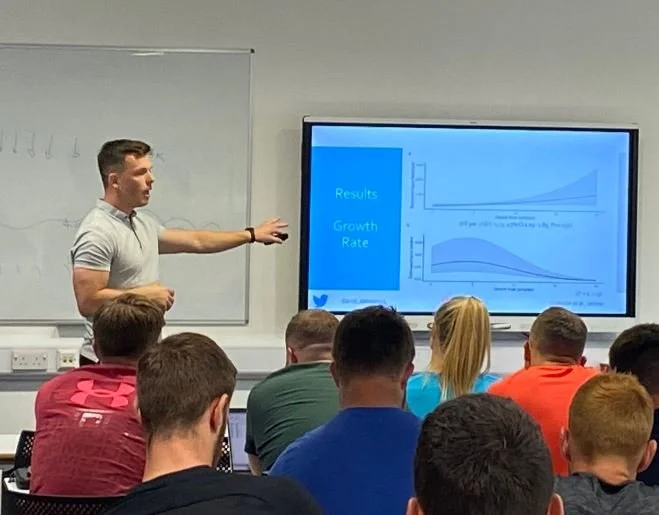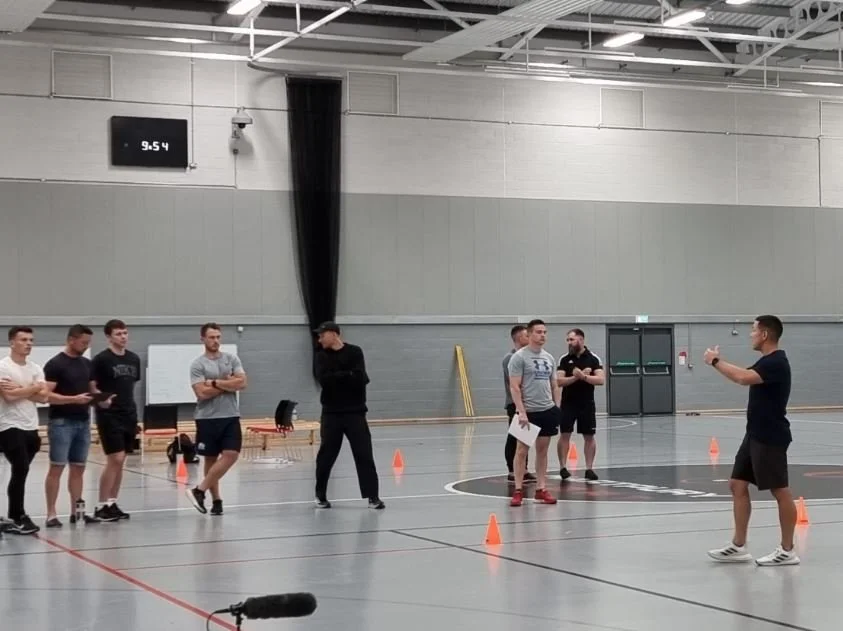A Recap from the LTAD Network Conference
This next guest blog is courtesy of Jamie Joyce, an Athletic Development Coach working in the youth sector. James was fortunate enough to win a ticket for the LTAD Network conference in July, courtesy of the Practitioner Development fund. If you’d like to see what the fund is all about, you can find out more here: https://gofund.me/d71482d7 - Keep an eye out for future personal development opportunities available through this fund, by following Collaborate Sports on socials.
Jamie recaps extremely well here his take home messages from the event, which will be a fantastic read for anyone who couldnt make it themselves. Enjoy the read, lots of golden nuggets in here!
It was a weekend filled with insightful speakers, detailed chats over lunch & more pints than some had anticipated. The programme covered a great mix of topic areas with talks from practitioners operating in a variety of settings spanning speed skating to football to the private sector and more! The practical sessions had a “take it home and use it Monday morning” focus interspersed nicely between the detailed and nuanced presentations from the speakers in the classroom.
Content shared and discussed ranged from managing rehab and return to performance post ACL injury from Matt Jordan to speed training from Mike Young, as well as and numerous interesting case studies diving into the minefield of growth & maturation. We were even given a glimpse into what could be the future of assessing growth & maturation with a live demonstration of the cutting edge Sonicbone BAUSport device too. The conference really was a well-rounded programme with something for everyone.[JJ1]
Below are my recaps!
SPEAKER: Matt Jordan – Managing Return to Performance, Assessing Neuromuscular Function, Periodisation
Dr. Matt Jordan presented 3 times across the weekend, each time providing thought provoking information for attendees. While he spoke in 3 slots and covered a variety of issues from athlete monitoring to climate change (yes really!), they all linked seamlessly and got the room thinking on each and every occasion. You could write a book with the amount of information Matt shared across the 2 days. Instead of summarizing all of his findings I will instead share some of the key themes of his systematic approach to training and the interesting questions that got me thinking while listening to him speak.
These were:
There is no evidence that can inform practice better than longitudinal data collected over time with an athlete. In order to manage complexity and find answers coaches should “be like Sherlock Holmes” and have many tools and ways of gathering data in order to inform decision making.
Periodisation theory is exactly that, a theory. Many traditional models don’t stand up to the logistical challenges of the real world. Threading the needle between structured plans and planned flexibility is key to achieving success high performance sport. Having effective athlete monitoring systems to evaluate your athlete’s response to the training loads you prescribe is the best periodisation strategy there is.
“Just because you have it, doesn’t mean you have to use it, but if you don’t have it then you can’t use it “– Sophia Nimphius.
This quote by Sophia was mentioned multiple times, mainly around the importance of developing maximal muscle strength in youth athletes & rehab cases.
ACL injuries occur typically in less than 50 milliseconds: - “Do we as practitioners train athletes to produce forces rapidly anyway near as well as we train athletes to simply produce more force?”
Rehab & return to performance post injury is a complex process to manage and one that is typically not done optimally even in elite settings. Traditional time-based models and the concept of passing a certain gym or lab-based test suddenly meaning athletes are okay to return to sport is flawed. A paradigm shift is needed to improve how this complex transition is managed so that athlete outcomes can be improved.[JJ2]
SPEAKER: James Baker – What is Potential?
James gave an insight into the sports science provision at Aspire Academy in Qatar. He discussed the challenges of talent identification in athletics & presented a nice case study which showcased the importance of having maturation status data when considering which athlete’s have the most potential and to inform decisions. He demonstrated how his group are leading the way in using the bio banding concept in training and interpreting competition results, to provide better feedback on their performance relative to their stage of maturation. Take homes below:
Success at junior levels is a poor predictor of success at senior level
If you’re not assessing maturation status when testing youth athletes and trying to identify potential talent, you are missing half the picture
Performance improvement is non-linear during adolescence, earlier maturing athletes don’t always outperform later maturers at certain timepoints
(James put up an excellent summary thread on twitter sharing his content from the conference which can be seen here: https://twitter.com/jamesbaker_8/status/1546467856958767111 )
SPEAKERS: David Johnson & Megan Hill – Growth & Maturation Research in Academy Football
Both Megan and David presented their PhD research findings with a shared theme of growth and maturation in academy football. David’s research investigated the challenge of monitoring and reducing injuries during the adolescent growth spurt with academy footballers at Bournemouth FC. Megan shared the perspective of coaches’ understanding of maturation in academy football at Southampton FC. The major nuggets of information that they shared which resonated with me were:
There is clear evidence of the relative age effect in elite academy football groups
Coaches are hesitant to play later maturers in games as it reduces their chances of winning
There is a distal to proximal pattern or limb growth during adolescence and growth-related injuries typically follow the same pattern
There are 3 key injury risk factors associated with growth & maturation; a growth rate of > 7.2cm/yr, Lower limb growth rate of of >3.6cm/yr, and being between 88-92% of predicted adult height
There are both positives & negatives commonly associated with being an early maturer or later maturer. Using bio bands instead of chronological age bands could be the solution to ensure all players are challenged at an appropriate level as they develop at their own pace
Growth related injury incidence and burden during adolescence can reduced with targeted intervention strategies that reduce or modify training loads for at risk players
SPEAKER: Paul Read – Movement Assessment in Youth
Paul summarised a variety of research around the area of assessing movement with youth populations. Some memorable quotes & points made are below:
“Don’t give developing athletes a bigger engine if you’re not going to teach them how to control it”
When assessing movement, don’t just measure outcomes, identify how the outcome the was produced. Good athletes are often able to compensate to reach a desired outcome, but that compensation could lead to problems!
Be cautious & consistent with your cuing when testing young athletes – what you say can dramatically alter how the test is performed
Mike Young – Speed Development 101, Strength & Power to Compliment Speed
Mike delivered 2 practical sessions in the area of speed. He covered both on track and field-based training design on day 1 and supported this with gym focused strength & power work that influences speed on day 2. I’m lucky enough to have seen Mike present before and while I was aware of some his key principles already, there was still loads to take in. My take homes below:
“No step in sprinting is the same”
“While it’s useful when learning to consider sprinting in phases (Accel, Max V etc.), it is much more of a continuum progression that doesn’t fit in separate boxes or phases”
His speed rocket solution to hacking max velocity training in relatively smaller indoor spaces was gold. Basically by tying two power bands together, and having 2 people sling shot the athlete into higher velocities faster, max speed can be achieved in smaller spaces!
His hierarchical approach to deciding what to tackle first when starting to coach someone who wants to develop speed. That being, optimise each of the following in order:
Body Comp > Force Capacity > Force Direction > Minimise GCT
“Don’t ignore the often-forgotten side of the force velocity curve in the gym as it is the most important side to compliment sprinting assuming basic strength capacities have been achieved”
SPEAKER: Rob Walsh – Movement Screening & Dysfunction
Rob’s addressed the sometimes-controversial topic of movement screening. Everyone has their views on the topic, but he did a good job in explaining his process and rationale for using it. His focus was towards skiers & snowboarders in a club context where he has limited means of assessing them with limited equipment or technology. The most memorable points were:
What is a muscle imbalance? “When a muscle is too long or too short”
There are 2 types of muscle tightness. Structural tightness caused by physical issues, or blockage in the body & neurological tightness, generally due to weakness or inhibition of muscles around a particular joint.
His system for classifying the underlying cause of a movement dysfunction is: “Tightness, Weakness or Motor Control?”
Speaker: Rob Anderson – Habit Curriculum to Develop 24hr Athletes
Rob’s presentation was one of the highlight for me with honest and funny anecdotes about the life of a practitioner in youth sport, many of which I can definitely relate to. This coupled with many simple and practical snippets for coaches working without all the bells and whistles was great to listen to, as it relates to the real world we operate in. The progression based curriculum he shared was outstanding with elements I will be stealing and adapting for my working environment. Best bits for me:
His 3 Ps System of Speed & Agility Training with young athletes: Posture, Practice, Play
“The downfall of typical youth athlete education is that it is not monitored or followed up on” – the current system of a couple of workshops a year, 6 months apart on topics like nutrition wont work for habit stacking and behaviour change
The entire habits curriculum can be found online, so with Robs advice, take it and adapt it to your environment. I know I will be! I suggest reaching out to Rob on socials to hear more!
If you’ve gotten this far and are now feeling as though you missed out, you definitely did! Don’t miss this event next year!
I hope everyone reading has picked up at least something of value from this recap on the weekend. Thanks again to Dan and everyone who contributed to the fund which enabled me to attend, I really appreciate it!
Another HUGE thanks to Jamie for capturing the insights from this event, that will help anyone reading! Sharing knowledge and insights in collaboration is a key focus of the work within Collaborate Sports, so thank you for contributing so well with this article.
The Collaborate Sports community is growing with 70 practitioners from across the globe interacting with one another on our online platform, as part of programmes focusing on targeted and intentional mentorship to drive their personal development. I’d be happy to talk to anyone wanting to hear more, you can contact me using the button here >









